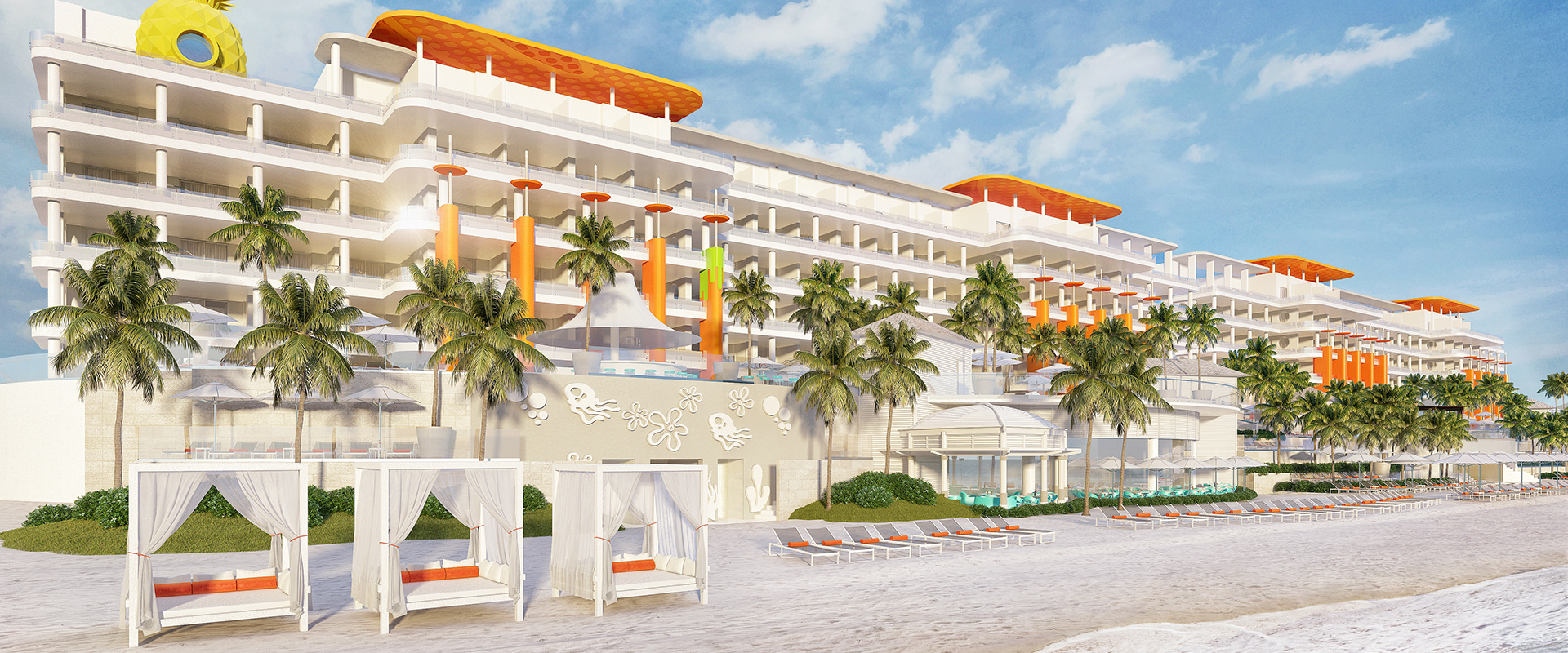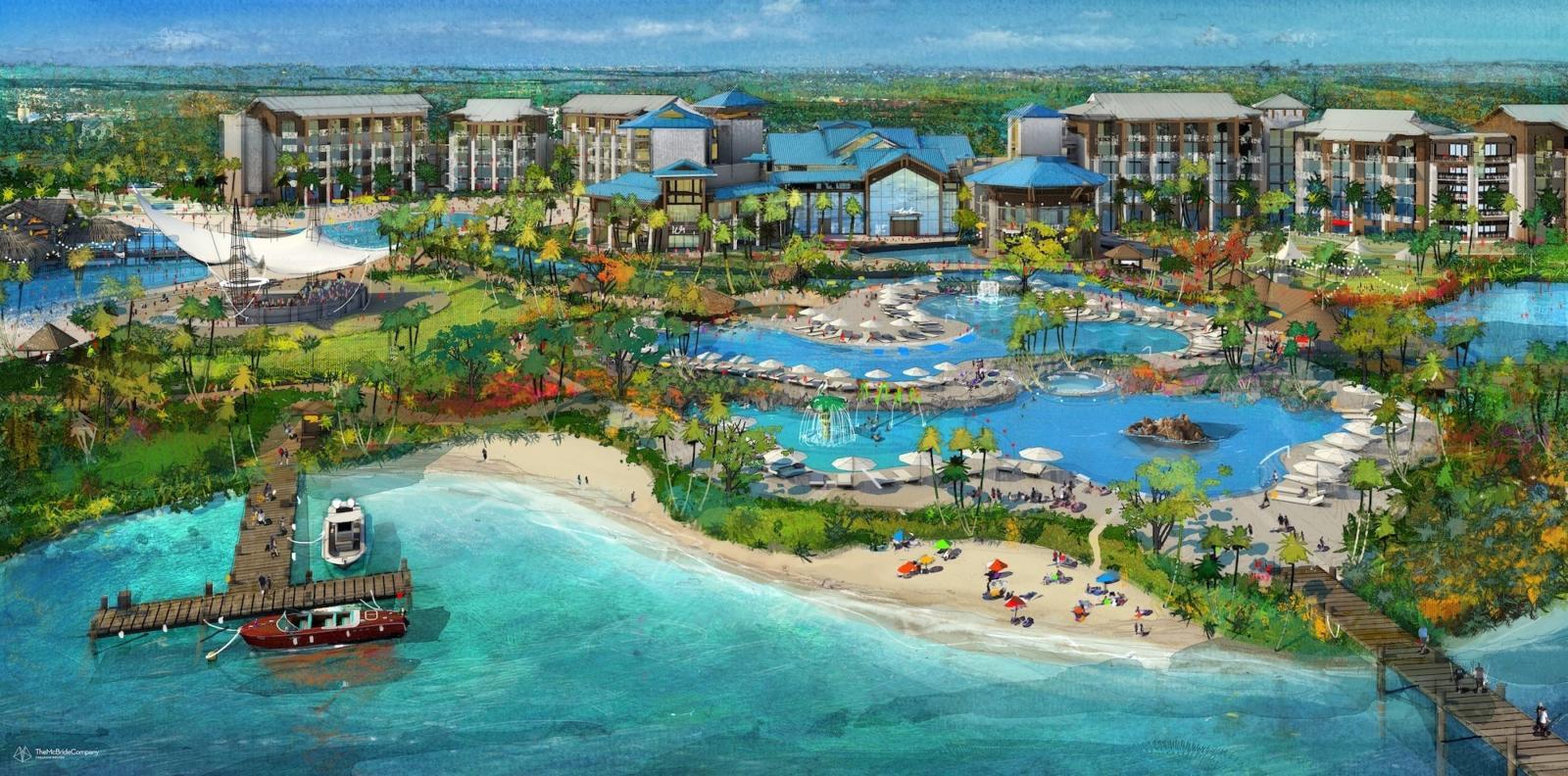The experience-driven resort is being built now.

Experience-driven design can create an inviting atmosphere, strong revenue, and customer loyalty for today’s resorts and destination hotels.
"Hotels need to move beyond brand identity and extend and deepen their relationships with travelers." -- Stephen Jennings, US Leader, Deloitte Hospitality.
Peanuts, Great Wolf Lodge, Margaritaville Resort Orlando, Hard Rock and our latest hotel projects for Nickelodeon, all use experience-driven design to create and build upon an established worldview or narrative. More than a theme, an experience driven by design is both an introduction to and a connection for guests and fans alike. Just like a new book or movie sequel, experience-driven resorts add to the overall narrative. They encourage guest loyalty and build devotion to the brand or franchise.
"An experience-driven design creates a cohesive narrative during your stay. A beginning, a middle--where the fun is--and an ending" says Johnnie Rush, Chief Innovation Officer for The McBride Company.
For entertainment brands like Nickelodeon or Margaritaville, creating the right physical experience to complement and enhance a world that has only existed in song or on-screen can be a rewarding challenge.
Audience
Stories such as Harry Potter and Star Wars have strong, diverse, and passionate audiences. And like many brands, the way they interact with the narrative can vary depending on the channel (think Instagram vs TV or retail vs video games). Understanding which segments of these audiences are a potential fit is a critical first step. Fan expectations need to be balanced against market dynamics that affect the price, service-level, and amenities of hotels and resorts.
"We are working with a major media company who has multiple audiences interacting with their brand depending on the channel. Understanding those audiences is critical to creating the right experience. It's a challenge that traditional architecture firms struggle with. I learned this first-hand during my time with The Walt Disney Company, you need to find people with a unique blend of creative, financial, storytelling, and design abilities" says Rush.
A mismatched audience could devalue the experience, harm the brand or become a barrier to booking for guests.
Trust
Experience-driven designs create as much passion in the guest as they do the creative owner or developer. A developer wants to be smart with the investment and ensure a consistent ROI. For the creative owner, they are entrusting their most valuable asset—the story—to another person or company. Both parties are deeply invested in a project such as Margaritaville Resort Orlando.
Even something as simple as a fountain can destroy a relationship. A designer creates a beautiful, impressive fountain, but does not consider the maintenance or operational costs. The resort operations team cannot maintain it and it sits dormant. The creative owner gets frustrated because the narrative is broken. It's like you ripped pages out of a book, but that book is still for sale. Both parties get frustrated and lose trust.
This is one of the most valuable, but often overlooked roles for a project--creative orchestration between the developer and the creative owner.
Design Intelligence

Most architecture firms or even theme park designers start with the wow and then scale back. They show the creative owner the best possible interpretation of their brand. Then budgets and timelines start to chip away at that idea. Design intelligence is a specific approach to develop a creative vision that can be built and be profitable. It means having knowledge of materials, maintenance, operations, and a background in storytelling to ensure everything works in harmony.
Design intelligence also informs the approach to merging design with operations. Like in the fountain example above, it helps teams be smart about materials and maintenance to ensure that the experience stays consistent both for the creative owner and the guest.
"Using design intelligence to build a physical space is a lot like creating a great family movie script. The whole movie is well-done, but there are jokes for my kids and subtle nods for me" explains Rush. "It keeps both groups engaged and the experience moving forward. Design intelligence helps us create the same dynamic but in a lobby or restaurant."
Audience, trust, and design intelligence are the basics of experience-driven design They are how we approached and built exceptional experiences for brands such as Peanuts, ESPN, Discovery Channel, Great Wolf Lodge and Nickelodeon among others. And these exceptional experiences are creating market differentiation when others are too focused on tech or disruption.
Different locations, different brands, but all with a common approach to creating a great experience.